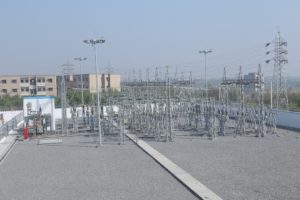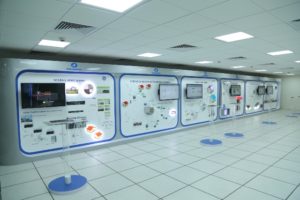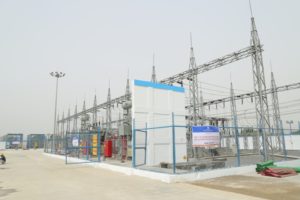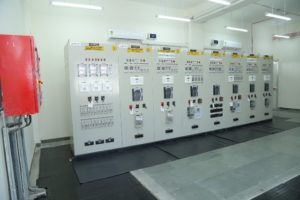
Tata Power Delhi Distribution Ltd is a joint venture between Tata Power Company Ltd (holding 51 per cent equity stake) and the Government of NCT of Delhi. Tata Power DDL is amongst the oldest examples of private sector participation in power distribution, and infused remarkable in technical and commercial efficiency in power distribution activities of North Delhi, its command areas. We have Sunil Singh sharing insights on the various initiatives taken by the utility in staging this operational turnaround. An interview by Venugopal Pillai.
Tata Power DDL has been a forerunner in the field of grid automation. Tell us about the level of automation and centralized grid monitoring achieved so far.
Tata Power Delhi Distribution Ltd (Tata Power-DDL) has always been the frontrunner power distribution utility when it comes to technology adoption and deployment. There are many firsts to its name like deployment of Geographic Information System (GIS), Supervisory Control and Data Acquisition (SCADA), Outage Management System (OMS) etc.
 In Tata Power-DDL there are 75 grid substations in its primary distribution (or sub-transmission) network and all these grid substations are unmanned. These are being monitored and controlled from a Centralized location by Supervisory Control & Data Acquisition System (SCADA) system with integrated Distribution Management System (DMS). Under Grid Substation Automation (GSAS) and Distribution Automation (DA) initiatives, all the earlier deployed electromechanical relays in grid Substations were replaced or retrofitted with advanced microprocessor based numerical relays, IEDs Bay Control Units, Transformer Monitoring Units (TMU), Under distribution Network Automation in secondary network, field passage indicators (FPIs) and motorization of strategic network points was carried out. All these technology deployment along with network strengthening schemes have helped TPDDL in achieving remarkable improvement in network availability, power reliability and loss reduction etc. for enhanced customer satisfaction.
In Tata Power-DDL there are 75 grid substations in its primary distribution (or sub-transmission) network and all these grid substations are unmanned. These are being monitored and controlled from a Centralized location by Supervisory Control & Data Acquisition System (SCADA) system with integrated Distribution Management System (DMS). Under Grid Substation Automation (GSAS) and Distribution Automation (DA) initiatives, all the earlier deployed electromechanical relays in grid Substations were replaced or retrofitted with advanced microprocessor based numerical relays, IEDs Bay Control Units, Transformer Monitoring Units (TMU), Under distribution Network Automation in secondary network, field passage indicators (FPIs) and motorization of strategic network points was carried out. All these technology deployment along with network strengthening schemes have helped TPDDL in achieving remarkable improvement in network availability, power reliability and loss reduction etc. for enhanced customer satisfaction.
We recall that Time of Day (ToD) tariff was introduced in Delhi on a pilot basis some years ago. What has been the response and progress on this front?
TPDDL has done a lot of advocacy for implementation of ToD tariff for Delhi consumers realizing its benefit of gradually flattening the load curve. This was done by sensitizing consumers to reduce load during peak hours and wherever possible, shift this consumption to off-peak hours. On a pilot basis, the Time of Day (ToD tariff) was introduced by DERC in Delhi in FY13 for industrial and commercial consumers having sanctioned load 300 KW and above.
The ToD Tariff has immediate as well as long term benefits for both consumers as well as the utility and it contributes towards controlling the rise in power purchase costs. At present, the ToD tariff in Delhi is applicable for consumers (except domestic) having sanction of load or MDI 25 KW/27 KVA and above with 20 per cent surcharge in energy tariff during peak period and 20 per cent rebate during off-peak period.
If you consider Smart Grid architecture in its entirety, what aspects has Tata Power DDL imbibed so far in its distribution area?
 Smart Grid enables integration, automation and real time communication of all the technologies that operate in silos to facilitate an optimized operation of the grid—from generation, transmission and all the way to distribution. Smart grid architecture is about exchange of various information i.e. telemetry, periodic and transition data etc. in a common platform. TPDDL has already deployed all the foundation technologies like SCADA, DMS, DA, OMS, AMR, ICT, SAP-ISU, CRM etc. back in 2013, itself.
Smart Grid enables integration, automation and real time communication of all the technologies that operate in silos to facilitate an optimized operation of the grid—from generation, transmission and all the way to distribution. Smart grid architecture is about exchange of various information i.e. telemetry, periodic and transition data etc. in a common platform. TPDDL has already deployed all the foundation technologies like SCADA, DMS, DA, OMS, AMR, ICT, SAP-ISU, CRM etc. back in 2013, itself.
TPDDL had carried out its Smart Grid feasibility study and prepared a roadmap for smart grid technology deployment for next ten years, which is by 2022. As part of study, the identified projects like technology refresh, integrated communication technology (ICT), automatic demand response (ADR), distributed generation etc, have already been deployed and other projects, such as advanced metering infrastructure, field force automation, business analytics and battery storage etc are under mature stage of deployment. All these applications would essentially enable us in performing utility operations in much better way by providing authenticated and reliable information to improve planning of network, power availability and reliability of power.
Take us through the trends in AT&C losses in the command area of Tata Power DDL, over the recent years?
AT&C losses in TPDDL area had come down to 11-12 per cent levels a few years back. It becomes progressively harder to reduce losses from this level. TPDDL closed FY17 with 8.59 per cent AT&C loss level. This improvement has come about with focused approach through in-house developed analytics and enforcement activity targeted at the cases identified. There is also a dedicated special consumer group for billing and collection of JJ (juggi jhopadi) consumers which encourages local women to bring about a change in mindset of the residents and also earn livelihood for themselves. Measures have also been taken for reduction of technical losses through various initiatives.
What have been the trends in terms of reliability of power supply and power availability?
There is a tremendous improvement in terms of reliability of power supply and power availability. It is worth mentioning that in the current summer, we had catered to peak load of 1,846 mw. The N-1 concept was introduced at sub-transmission level. As far as technologies with respect to switchgear, we had revamped all the grid stations consisting of MOCB and air blast circuit breaker with vacuum circuit breaker and SF6 breaker. Secondly, to improve reliability, the ring main unit concept was introduced where during failure of one source the supply can be backed through alternative arrangement.
 As already mentioned earlier, the deployment of technologies like SCADA, OMS, GIS, SAP, Integrated call centre have also been instrumental in enhanced network availability and reliability. To restore cable faults, dedicated crew was developed with best-in-class fault location van with complete instruments. Hotspots used to be the pain area of distribution network which resulted in fault. To cater this, infrared scanning cameras were procured and Hotspots are now easily identified and rectified periodically. This hot spot mitigation in turn also contributes to technical loss reduction.
As already mentioned earlier, the deployment of technologies like SCADA, OMS, GIS, SAP, Integrated call centre have also been instrumental in enhanced network availability and reliability. To restore cable faults, dedicated crew was developed with best-in-class fault location van with complete instruments. Hotspots used to be the pain area of distribution network which resulted in fault. To cater this, infrared scanning cameras were procured and Hotspots are now easily identified and rectified periodically. This hot spot mitigation in turn also contributes to technical loss reduction.
To identify the fault at infant stage in switchgear, ultrasound scanning technology was introduced where the fault in switchgear could be easily identified and vulnerability of the fault can be classified as tracking, corona and arcing. Power and distribution transformer plays a vital role in the reliability and to ensure the health of same, DGA test is done periodically to observe any anomaly in the transformer. Similarly oil testing were done for the distribution transformer and based on the results, mass filtration activity was performed. By doing so, now the transformer failure rate has been maintained at less than 1 per cent of the installed capacity. This used to be to the tune of 11 per cent at the time of takeover.
Further, adoption of these measures have also helped us in moving from preventive maintenance mode to condition based maintenance of equipment, which has further increased the reliability by taking outages only when it is really required.
Grid connected solar power plants are fast emerging on the scene. Tell us about the extent of solar power that the Tata Power DDL grid is currently handing?
 Spearheading the solar initiative, TPDDL embarked on its grid-connected rooftop solar journey way back in 2008 and till date has set up 15 grid-connected solar plants, with cumulative capacity of 1.69 mw, in its own premises. TPDDL pioneered the ‘Demonstration Programme on Tail End Grid Connected Solar Power Plants’, an initiative of Ministry of New and Renewable Energy (MNRE), and has commissioned eight solar plants under this prestigious program.
Spearheading the solar initiative, TPDDL embarked on its grid-connected rooftop solar journey way back in 2008 and till date has set up 15 grid-connected solar plants, with cumulative capacity of 1.69 mw, in its own premises. TPDDL pioneered the ‘Demonstration Programme on Tail End Grid Connected Solar Power Plants’, an initiative of Ministry of New and Renewable Energy (MNRE), and has commissioned eight solar plants under this prestigious program.
Very significantly, Delhi Electricity Regulatory Commission has approved TPDDL’s proposal for facilitation of installation of rooftop solar plant by providing single window service to consumers for supply, installation, testing and commissioning with maintenance agreement as opted by consumers. TPDDL is the first utility in India that is actively promoting solar power and net metering for its consumers. A total of 82 cases aggregating solar capacity of 5.6 mw are connected with grid.
What is the situation with respect to net metering?
As per DERC Guidelines maximum solar capacity to be allowed for net metering in a particular distribution transformer will be 20 per cent of its capacity. Tata Power-DDL will allow feasible solar projects of its consumers for registration on first-come-first-serve basis. For adjustment of solar energy for ToD Customers, electricity consumption in any time block (e.g., peak hours, off-peak hours, etc.) shall be first compensated with the electricity generation in the similar time blocks in the same billing cycle. For the purpose of carrying forward of surplus or set off energy credits, the energy units shall be moderated as per the relevant rebate/surcharge percentage of ToD Tariff. In further boost, Delhi government has decided to give a generation-based incentive (GBI) of Rs. 2 per unit of solar energy produced to domestic consumers and charitable organizations, during a month.
Tata Power DDL has completed nearly 15 years of service, and as widely appreciated, has completely transformed the way in which power distribution was handled till the transition in 2002. What would regard as your biggest achievements?
In the last 15 years, the journey has been quite satisfying in terms of crossing milestones one after the other. There have been many achievements during this journey. The biggest achievement has been the faith and the trust, TPDDL has been able to earn from its consumers. Over these years, the consumer satisfaction Index score has been 90 which itself is self-explanatory. To mention a few more, there are innovative adoption of technologies, motivated employees as a result of providing suitable environment for skill upgrade through various learning and developmental programs. The company employees look for innovative solutions to various issues/problems faced in the field and this approach has resulted in TPDDL being awarded several national and international accolades.


